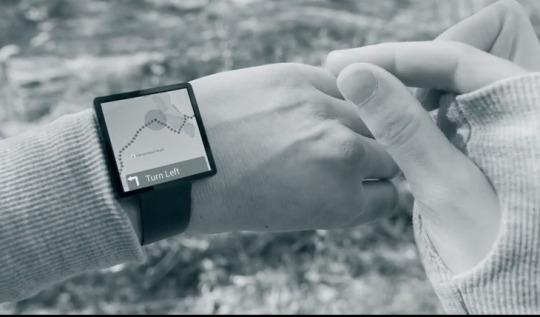
Photo: Project Soli via YouTube
Wearable devices are getting smaller and smaller. Our hands and fingers are not keeping up. Which is one reason why the gearheads at Google’s Advanced Technology and Projects group (ATAP) have been working on a way to control devices using nothing but simple hand gestures.
If Project Soli becomes a reality, one day you may be able to control smartwatches, fitness trackers, and other devices using the same gestures you use on your smartphone, only without the phone, says Ivan Poupyrev, technical program lead for Google ATAP.
“Your hands are always with you and very ergonomic,” he told an audience at Google I/O. “They could be the only interface you ever need for controlling wearable devices.”
Of course, gesture-based interfaces already exist. Many, like the Kinect or PlayStation Move, use cameras to detect your hand movements. So they only work when there’s a clear line of sight, and they’re utterly worthless in the dark.
Google’s solution? Radar. The Soli chip blasts out radar signals from multiple antennae thousands of times each second. These create a field that can measure even minute movements of your fingers, detect when your fingers are crossed, or record signals from both hands at once.
From there, it’s a matter of software developers creating a vocabulary to interpret each gesture and translate it into an action, like deleting a message or taking a call on your smartwatch.
The new radar chip has a potential range of 5 feet or more, which could allow it to be integrated into all kinds of devices, including the walls of your home. In theory, one day you may be able to turn on the lights by snapping your fingers, or crank up the volume on your Sonos by turning an imaginary dial in the air.

On the left, the original Project Soli prototype; on the right, the current chip (under the arrow). (Photo: Dan Tynan/Yahoo Tech)
Right now, Project Soli is just that — a research project. But its progress has been impressive. In just 10 months, Google’s prototype has evolved from a toaster-size circuit board to a chip that’s smaller than a toddler’s toenail. And the group has another eight months to go before the two-year project concludes.
Later this year, ATAP plans to open the device to developers to see what they can do with it. Google won’t necessarily build anything with the chip, but it may offer it as a reference design to manufacturers of smart devices.

No comments:
Post a Comment